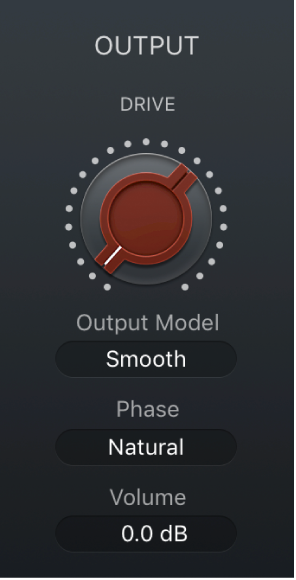Intro to the vintage EQ collection in Final Cut Pro for Mac
The Vintage Console EQ, Vintage Graphic EQ, and Vintage Tube EQ effects are modeled on the original EQ circuits of three classic units from the 1950s, 1960s, and 1970s.
The unique output stage of each unit is also modeled, allowing you to pair the output stage of any unit with the original or other EQ models.
Further enhancements include fully sweepable frequency controls that allow more detailed signal contouring than the fixed-frequency options found on some of the original devices.
Each vintage EQ unit provides a distinct tonal signature that imparts a sonic color on signals, unlike precise, clean modern equalizers such as the other Logic EQs.
All vintage EQ models share a set of common Output controls, along with unique controls that are discussed in each section.
Output controls

Drive knob: Set the amount of gain/saturation of the chosen vintage EQ output stage. This imparts the distortion and coloration of the original hardware output stage, even if all EQ bands are in a neutral position.
Output Model pop-up menu: Choose a vintage EQ model output stage. You can use the matching output stage model for the active EQ or choose the output stage of another unit. The output stage allows you to add harmonic distortion to your signals.
Silky (Tube EQ): The output stage of the Vintage Tube EQ.
Punchy (Graphic EQ): The output stage of the Vintage Graphic EQ.
Smooth (Console EQ): The output stage of the Vintage Console EQ.
Phase pop-up menu: Set the processing mode of the EQ and the chosen output stage. Natural mirrors the cut/boost phase shifts of the original EQ. Linear allows EQ changes without phase shifts of the source signal.
Each analog EQ introduces phase shifts of the signal which can have an audible (and often desirable) effect on the sound. In some situations, however, phase shifts can affect transients. This is especially the case when using steep cut filters, or high boost of narrow filters. Linear phase filters let you change only the gain of a certain frequency area of your material by retaining the phase, with slightly higher latency than in natural mode.
Volume field: Drag vertically to set the overall effect output level. The range is ±25 dB.
Download this guide: PDF